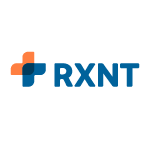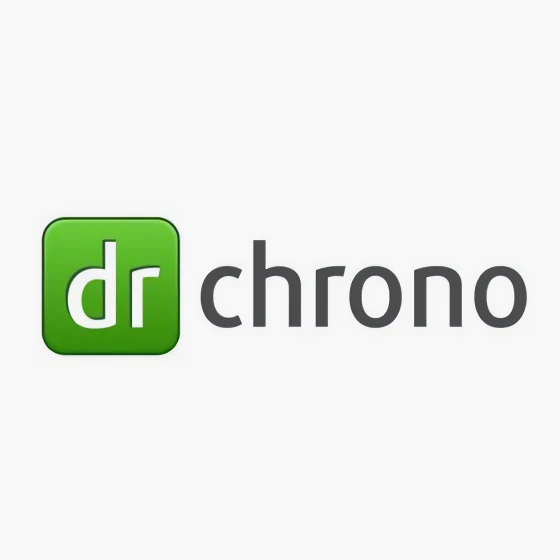10 Best Primary Care EHR Shortlist
Here's my pick of the 10 best software from the 27 tools reviewed.
Our one-on-one guidance will help you find the perfect fit.
Primary care EHRs help streamline clinical documentation and patient management, which frees up your team to focus on preventative care planning and population health. Managing high patient volumes can be challenging, but the proper support can reduce administrative load and improve coordination.
In this article, I compare and review the best primary care EHR tools to support your buying decision.
Best Primary Care EHRs Summary
| Tool | Best For | Trial Info | Price | ||
|---|---|---|---|---|---|
| 1 | Best for AI-driven documentation | Free demo available | Pricing upon request | Website | |
| 2 | Best for real-time patient insights | Free demo available | Pricing upon request | Website | |
| 3 | Best for cloud-based access to patient records | Free demo available | From $110/month/provider | Website | |
| 4 | Best for data visualizations | Not available | Pricing upon request | Website | |
| 5 | Best for telemedicine features and mobile access | Free demo available | From $429/user/month (billed annually) | Website | |
| 6 | Best for its robust API for tech-savvy users | Free demo available | From $199/user/month (billed annually) | Website | |
| 7 | Best for full medical billing service integration | Free demo available | From $850/user/month | Website | |
| 8 | Best for ophthalmology-specific features | Not available | From $349/user/month, with options for additional features at higher cost tiers. | Website | |
| 9 | Best for its unique voice recognition capability | Not available | Pricing upon request | Website | |
| 10 | Best for patient-focused documentation | Not available | From $200/user/month. | Website |
Best Primary Care EHRs Reviews
NextGen Healthcare is a comprehensive medical software platform offering features like electronic health records (EHR), practice management, and a patient portal. It's specifically tailored to support multidisciplinary healthcare practices, including primary care teams.
Why I Picked NextGen: I chose NextGen because it includes Ambient Assist—an AI tool that listens during patient visits and generates SOAP notes automatically. That saves providers as much as two hours daily, giving you more face time with patients and cutting after-hours charting. It supports English and Spanish interactions and even suggests ICD‑10 codes, meds, labs, and diagnoses as you go.
Standout features & integrations:
NextGen Healthcare stands out with its in-depth EHR capabilities, revenue cycle management, and patient engagement tools. Additionally, it offers seamless integration with many external systems, including billing systems, patient management tools, and lab information systems, making it a versatile addition to any healthcare practice.
Pros and cons
Pros:
- Supports multidisciplinary practices
- Template and card features make navigation quicke
- AI-generated notes to save time spent charting
Cons:
- Occasional delays in patient portal syncing
- Ambient assist may misinterpret speech or require editing
Athenahealth offers a comprehensive cloud-based healthcare platform known as athenaOne, which integrates various software and services to enhance clinical effectiveness, patient experience, and financial performance for healthcare providers.
Why I Picked Athenahealth: I like that it offers detailed, real-time patient insights and customizable workflows tailored to specific specialties. This allows primary care providers to access critical patient information quickly and efficiently, improving the quality of care delivered. The platform also supports voice-powered services and telehealth capabilities, which are increasingly important for more flexible and accessible care options.
Standout features & integrations:
Athenahealth offers a plethora of useful features, such as revenue cycle management, communication and care tools for patient engagement, an easy-to-read summary of patient records, a patient portal, automated reminders, and mobile accessibility. Integrations include NextPatient, DocResponse, Yosi Health, Secondwave, Recovery Plus, TSI, VaxCare, Fullscript, QueueDr, and CallMyDoc.
Pros and cons
Pros:
- Cloud-based system for remote access
- Robust patient engagement tools
- Broad range of integrations with other healthcare systems and devices
Cons:
- Data migration can be time-consuming
- Complexity of the system may result in a learning curve
RXNT is a comprehensive healthcare software solution designed for medical practitioners and billing professionals. It offers an integrated suite that includes practice management, electronic health records, and electronic prescribing, all accessible on mobile and desktop.
Why I Picked RXNT: RXNT is a cloud-based platform, which means it allows healthcare providers to access patient records, lab orders, and electronic prescriptions from any internet-connected device. This flexibility is crucial for primary care practices that require real-time access to patient information to make informed decisions quickly. Another key feature of RXNT is its integrated practice management capabilities, which include billing, scheduling, and patient engagement tools.
Standout features & integrations:
Key features include simplified record management, quick access to up-to-date patient information and lab orders, and a patient portal. Additionally, it offers customizable documentation templates for efficient charting. RXNT integrates with other healthcare tools like Hospice Tools, Exym, EMSOW, and OneMD.
Pros and cons
Pros:
- Effective e-prescribing capability
- Full suite of healthcare features
- Customizable templates
Cons:
- Navigation can be a bit complex
- Could offer more detailed reporting capabilities
CareCloud is a cloud-based EHR solution designed to streamline practice management and patient engagement. With a keen focus on real-time data access and robust analytics, it equips health professionals with actionable insights on the fly.
Why I Picked CareCloud: In my quest to find the best EHR tools, I was drawn to CareCloud for its remarkable data analytics capabilities. I believe that modern healthcare is deeply reliant on accurate and timely data, which CareCloud delivers splendidly. This is why I determined that CareCloud is 'Best for real-time data and analytics capabilities.'
Standout features & integrations:
CareCloud excels in its real-time data visualization and analytics features, which allow for immediate understanding and response to patient needs. Furthermore, it provides a telehealth solution for virtual consultations and features for e-prescribing and billing. As for integrations, CareCloud is compatible with many third-party applications, aiding in the seamless coordination of tasks.
Pros and cons
Pros:
- Extensive integration possibilities
- Telehealth feature for virtual consultations
- Excellent data analytics capabilities
Cons:
- Interface might be overwhelming for some users
- Could be complex for new users
- High entry-level cost
AdvancedMD is a comprehensive medical software solution offering integrated electronic health records (EHR), practice management, and patient engagement tools. It stands out for its robust telemedicine features and mobile accessibility, providing clinicians with flexibility and efficiency in delivering patient care.
Why I Picked AdvancedMD: In my selection process, AdvancedMD stood out due to its comprehensive telemedicine capabilities and mobile access. These characteristics distinguish it from many other solutions and align with the growing need for remote healthcare services, making it the 'Best for telemedicine features and mobile access.'
I found the platform's flexibility and adaptability impressive, particularly how it allows healthcare providers to conduct remote consultations effectively and access critical information anytime, anywhere.
Standout features & integrations:
AdvancedMD offers a fully integrated telemedicine suite, allowing providers to conduct virtual visits, share screens, and even record sessions for later review. The platform also features a mobile app for both iOS and Android devices, granting access to patient information, schedules, and more on the go. AdvancedMD integrates seamlessly with many billing and coding systems, as well as third-party lab services.
Pros and cons
Pros:
- Wide range of integrations with billing and lab systems
- Mobile app for easy access to data on the go
- Comprehensive telemedicine capabilities
Cons:
- Some users report less than optimal customer support experiences
- Steeper learning curve for beginners
- Higher pricing compared to other solutions
DrChrono is a cloud-based EHR and medical billing platform that helps in task automation in medical practices, from appointment scheduling to billing. Its robust API distinguishes it as the go-to solution for tech-savvy users who desire more flexibility in integrating with other systems or customizing the tool's functionality.
Why I Picked DrChrono: I picked DrChrono for this list as it offers an advanced and well-documented API. This characteristic sets it apart from other EHR platforms, as it provides tech-savvy users with the ability to extend and tailor the software's functionalities. As such, I concluded that DrChrono is 'Best for its robust API for tech-savvy users.'
Standout features & integrations:
DrChrono features a user-friendly interface and customizable EHR forms alongside features like e-prescribing, lab integration, and real-time patient data updates. Furthermore, its robust API allows integrations with a plethora of tools, including billing software, lab systems, patient portals, and other medical data systems, extending its functionality even further.
Pros and cons
Pros:
- Diverse integrations with other medical systems
- User-friendly interface and customizable EHR forms
- Extensive API for custom integrations
Cons:
- Some features may be complex to new users
- Higher price point compared to some other tools
- Requires technical knowledge to leverage the API
AllegianceMD is an EHR software suite designed to manage all facets of a medical practice. It shines particularly in its medical billing services, with a range of features that aid in streamlining the process, leading us to judge it as the best option for those seeking full medical billing service integration.
Why I Picked AllegianceMD: I chose AllegianceMD for its integrated approach, which offers a comprehensive platform for clinical, administrative, and financial tasks. The primary reason for its inclusion, however, lies in its billing capabilities. It stands out for its commitment to making billing more efficient and less error-prone. In this light, AllegianceMD earns its spot as the 'Best for full medical billing service integration.“
Standout features & integrations:
AllegianceMD comes with a plethora of advanced features like real-time eligibility verification, electronic remittance advice, and an easy-to-use patient portal. Its EHR and Practice Management software has intuitive navigation and design, making it user-friendly. Among its integrations, it connects well with laboratories, pharmacies, and radiology departments, ensuring that all relevant information is readily available.
Pros and cons
Pros:
- Wide range of integrations with labs, pharmacies, and radiology departments
- Real-time eligibility checks and electronic remittance advice
- Comprehensive medical billing services
Cons:
- Lack of customization options
- Steep learning curve for some users
- Higher-end of the price spectrum
Compulink Healthcare Solutions is a comprehensive EHR solution built with medical practitioners in mind. Notably, its ophthalmology-specific features make it a standout, establishing it as an optimal choice for eye care professionals.
Why I Picked Compulink Healthcare Solutions: In my process of selection, Compulink Healthcare Solutions emerged due to its distinctive specialization in ophthalmology. Its uniqueness lies in its ability to cater to the specific needs of ophthalmologists, unlike many other generic EHR systems. Therefore, when considering the 'best for' criterion, Compulink Healthcare Solutions is definitely the 'Best for ophthalmology-specific features.'
Standout features & integrations:
Compulink Healthcare Solutions offers notable features such as optical inventory management, electronic prescription, and ophthalmology-specific EHR templates. It also provides patient engagement tools and customizable workflows. When it comes to integrations, this platform smoothly interacts with labs, pharmacies, and other medical services, ensuring effective coordination of patient care.
Pros and cons
Pros:
- Extensive integration with other medical services
- Customizable workflows
- Ophthalmology-specific features
Cons:
- Customer support could be improved
- Interface may seem outdated to some users
- Higher pricing tier
ChartLogic is an electronic health record (EHR) software that brings together patient charts, appointment scheduling, and billing into one integrated platform. Its standout feature is the unique voice recognition capability that allows physicians to create and navigate patient charts effortlessly.
Why I Picked ChartLogic: I chose ChartLogic for this list due to its exceptional focus on charting efficiency, with the distinct advantage of voice recognition technology. This functionality truly sets it apart from other EHR tools and affirms its position as the 'Best for its unique voice recognition capability.' The voice dictation feature allows healthcare providers to navigate and update patient charts quickly and efficiently.
Standout features & integrations:
ChartLogic's most significant feature is its voice recognition technology, which allows providers to create entire patient notes using their voice. Other useful features include a patient portal, e-prescribing, and robust charting capabilities. In terms of integrations, ChartLogic partners with various labs and pharmacies and supports interoperability with other healthcare systems.
Pros and cons
Pros:
- Support for interoperability
- Integrated platform for patient records, scheduling, and billing
- Unique voice recognition feature for charting
Cons:
- Customer support could be improved
- The user interface might seem outdated to some users
- Higher cost compared to other EHR systems
Elation Health is a cloud-based EHR solution that places heavy emphasis on patient-focused documentation. Designed with a Patient Passport feature, it enables healthcare providers to easily compile and access comprehensive patient profiles, enhancing both patient care and practice efficiency.
Why I Picked Elation Health: In the realm of EHR tools, Elation Health caught my attention due to its unique patient-centric approach to documentation. In my assessment, this focus truly sets it apart from other tools and significantly aids in streamlining patient care. Consequently, I designated Elation Health as the 'Best for patient-focused documentation.'
Standout features & integrations:
Elation Health's standout features include its intuitive Patient Passport, which facilitates easy access to patient history and the creation of comprehensive profiles. It also offers a Clinical First design, enabling providers to see patient notes, medical history, and test results in one view. For integrations, Elation Health connects with a multitude of lab systems, pharmacies, and billing systems, promoting practice-wide coherence.
Pros and cons
Pros:
- Extensive integration possibilities
- Clinical First design promotes productivity
- Patient Passport feature for efficient documentation
Cons:
- Customer support can be improved
- Some features may have a learning curve
- Might be pricier for small practices
Other Primary Care EHR Tools
Below is a list of additional Primary Care EHR that I shortlisted but did not reach the top 10. Definitely worth checking them out.
- Practice EHR
For customization and personalized workflow
- RXTN
For cloud-based solutions with full medical practice functionality
- Tebra
For independent practices looking for a complete platform
- PrognoCIS
Good for mobile access to clinical data and workflows
- Nexus
Good for data-driven decision-making with analytics
- Benchmark System Practice Management
Good for practices needing seamless front and back-office coordination
- HARMONY Medical
Good for integrating care management with telemedicine
- Euclid
Good for clinics looking for comprehensive administrative tools
- MedicsCloud EHR
Good for cloud-based EHR with real-time updates
- WRS Health
Good for specialty-specific electronic health records
- NovoClinical
Good for enhancing patient engagement with portals
- MDConnection
Good for intuitive patient scheduling and billing
- MedPointe
Good for practices seeking customizable medical software solutions
- EZClaims
Good for streamlined insurance claims processing
- ReLiMed
Good for user-friendly patient data management
- WAYSTAR
Good for advanced revenue cycle management
- CharmHealth
Good for holistic care with inbuilt wellness tracking
What is primary care EHRs?
Primary care EHRs are electronic health record systems designed for general practitioners. They support longitudinal patient care, preventive health tracking, and chronic condition management. Used by internists, family physicians, and nurse practitioners, these systems address challenges like fragmented care, poor documentation, and inefficient workflows.
Selection Criteria For Primary Care EHR
In the search for the perfect medical practice management software, I've personally evaluated dozens of tools. I've combed through their features, assessed their user interfaces, and looked at how well they fit into the daily operations of a medical practice. Ultimately, I found that certain criteria matter the most when choosing this type of software.
Core Functionality:
For medical practice management software to be effective, it should enable the practice to do the following:
- Schedule appointments and manage patient records
- Handle billing and insurance claims efficiently
- Produce useful reports for analysis and decision-making
- Maintain compliance with healthcare regulations like HIPAA
Key Features:
To stand out among a sea of competitors, the software needs to offer unique features. For medical practice management software, the following features are crucial:
- Integrated Electronic Health Records (EHR): This feature simplifies the process of managing patient data and ensuring continuity of care.
- Telemedicine Capabilities: With the rise of virtual consultations, having built-in telemedicine capabilities is a significant advantage.
- Automated Reminders: This feature reduces no-shows by automatically sending appointment reminders to patients.
- Customizable Reporting: The ability to customize reports allows practices to focus on metrics that matter the most to them.
Usability:
When it comes to usability, a practice management tool needs to cater to a wide range of users, from administrative staff to physicians. Therefore, the following aspects are important:
- Intuitive User Interface: The software should have clear navigation and easy-to-find features, minimizing the need for extensive training.
- Accessibility: The tool needs to be accessible from multiple devices, allowing staff to access patient information and schedules at any time, from anywhere.
- Support and Training: Comprehensive customer support, including training resources and quick response times, is vital for resolving issues and ensuring smooth operations.
- Scalability: The software should be able to accommodate the growth of a practice, handling an increasing number of patients and records without sacrificing performance.
Most Common Questions Regarding Best Primary Care EHRs (FAQ's)
What are the benefits of using a Primary Care EHR tool?
Using a Primary Care EHR tool provides several benefits, including:
- Enhanced Patient Care: EHR tools allow for the systematic collection and organization of patient data, promoting more accurate diagnoses and effective treatments.
- Improved Efficiency: With easy access to patient data, healthcare providers can save time and streamline administrative tasks such as scheduling appointments and managing billing.
- Better Coordination of Care: EHRs provide a platform for healthcare providers to collaborate and share information, leading to better coordinated and integrated care.
- Regulatory Compliance: EHRs help maintain compliance with healthcare regulations such as HIPAA, enhancing patient trust and avoiding legal complications.
- Decision Support: With integrated analytics and reporting capabilities, EHRs can support decision-making, helping to improve patient outcomes and operational efficiency.
How much do Primary Care EHR tools typically cost?
The cost of Primary Care EHR tools can vary widely, depending on the features, number of users, and level of support needed. They typically follow a subscription pricing model, with fees charged per provider per month. Some providers may also charge a setup or implementation fee.
What are the typical pricing models for Primary Care EHR tools?
Most Primary Care EHR tools follow a per-user or per-provider subscription pricing model. This could be on a monthly or annual basis. There may also be additional costs for implementation, training, and support.
What is the typical range of pricing for Primary Care EHR tools?
Pricing for Primary Care EHR tools can range from around $100 to over $500 per provider per month. The cost can vary based on the number of providers, the complexity of the tool, and any additional services like support or training.
Which are the cheapest and most expensive Primary Care EHR software?
The cheapest EHR software can start as low as $100 per provider per month, while the most expensive ones can go over $500 per provider per month. It’s important to consider the features and services included in the cost when comparing prices.
Are there any free Primary Care EHR tool options?
Yes, there are some EHR tools that offer free versions or free trials. However, these are often limited in features or are meant to serve as a demonstration of the tool’s capabilities. To access the full range of features, upgrading to a paid plan is typically required.
Other Types of EHR/EMR
Here are some other popular EHR and/or EMR solutions for a modern medical practice.
What Next?
To stay updated on the latest trends, best practices, and solutions related to your medical practice, subscribe to The Medical Practice newsletter.














![NextGEN screenshot - 27 Best Primary Care EHRs for 2025 [My Reviews]](https://themedicalpractice.com/wp-content/cache/themedicalpractice.com/static/static.crozdesk.com/web-app-library-categories-providers-screenshots-002-681-036-pub-nextgen-0-screenshot-1750278168.png)
![Athenahealth screenshot - 27 Best Primary Care EHRs for 2025 [My Reviews]](https://themedicalpractice.com/wp-content/cache/themedicalpractice.com/static/static.crozdesk.com/web-app-library-categories-providers-screenshots-002-661-668-pub-athenahealth-0-screenshot-1726076892.png)
![RXNT screenshot - 27 Best Primary Care EHRs for 2025 [My Reviews]](https://themedicalpractice.com/wp-content/cache/themedicalpractice.com/static/static.crozdesk.com/web-app-library-categories-providers-screenshots-002-645-640-pub-rxnt-screenshot-1726150029.png)
![CareCloud screenshot - 27 Best Primary Care EHRs for 2025 [My Reviews]](https://themedicalpractice.com/wp-content/cache/themedicalpractice.com/static/static.crozdesk.com/web-app-library-categories-providers-screenshots-002-641-312-pub-carecloud-screenshot-1723197026.png)
![AdvancedMD screenshot - 27 Best Primary Care EHRs for 2025 [My Reviews]](https://themedicalpractice.com/wp-content/cache/themedicalpractice.com/static/static.crozdesk.com/web-app-library-categories-providers-screenshots-002-682-479-pub-advancedmd-screenshot-1723197042.png)
![DrChrono screenshot - 27 Best Primary Care EHRs for 2025 [My Reviews]](https://themedicalpractice.com/wp-content/cache/themedicalpractice.com/static/static.crozdesk.com/web-app-library-categories-providers-screenshots-002-650-351-pub-drchrono-screenshot-1723197044.png)
![AllegianceMD screenshot - 27 Best Primary Care EHRs for 2025 [My Reviews]](https://themedicalpractice.com/wp-content/cache/themedicalpractice.com/static/static.crozdesk.com/web-app-library-categories-providers-screenshots-002-658-658-pub-allegiancemd-screenshot-1723197013.png)
![Compulink Healthcare Solutions screenshot - 27 Best Primary Care EHRs for 2025 [My Reviews]](https://themedicalpractice.com/wp-content/cache/themedicalpractice.com/static/static.crozdesk.com/web-app-library-categories-providers-screenshots-002-652-973-pub-compulink-healthcare-solutions-screenshot-1723197024.png)
![ChartLogic screenshot - 27 Best Primary Care EHRs for 2025 [My Reviews]](https://themedicalpractice.com/wp-content/cache/themedicalpractice.com/static/static.crozdesk.com/web-app-library-categories-providers-screenshots-002-653-742-pub-chartlogic-screenshot-1723197032.png)
![Elation Health screenshot - 27 Best Primary Care EHRs for 2025 [My Reviews]](https://themedicalpractice.com/wp-content/cache/themedicalpractice.com/static/static.crozdesk.com/web-app-library-categories-providers-screenshots-002-660-030-pub-elation-health-screenshot-1723197026.png)